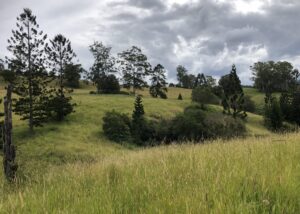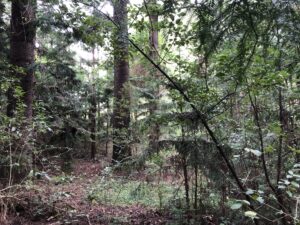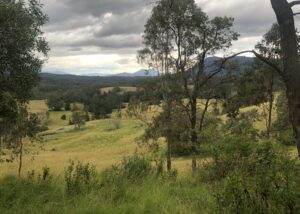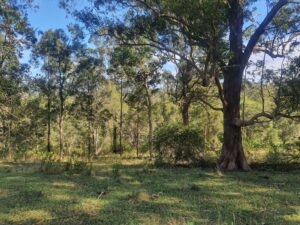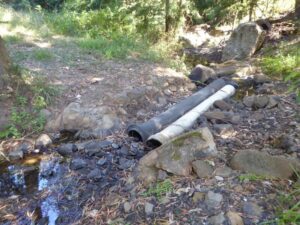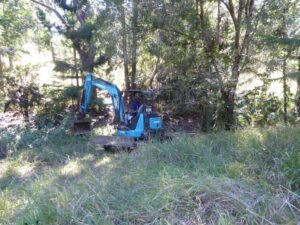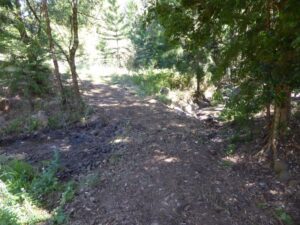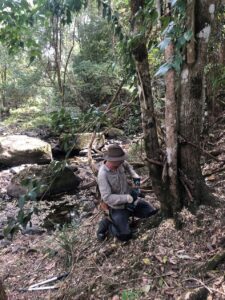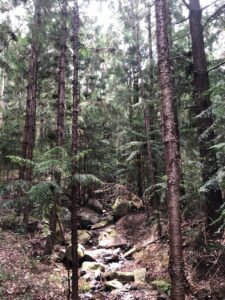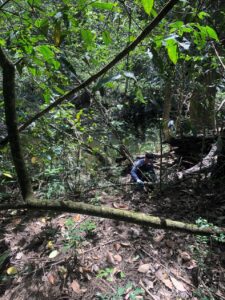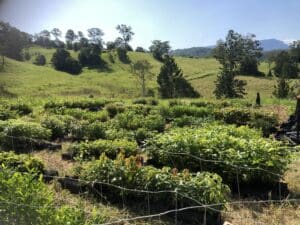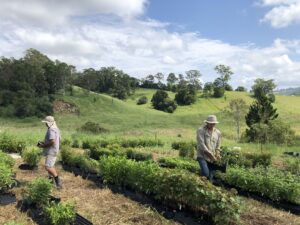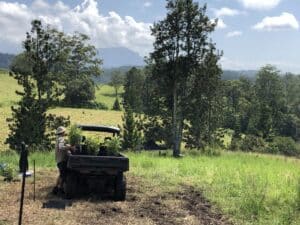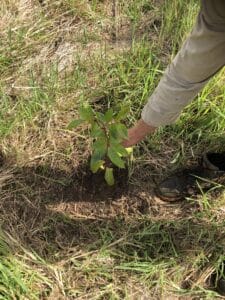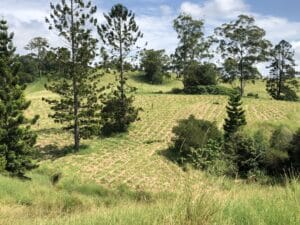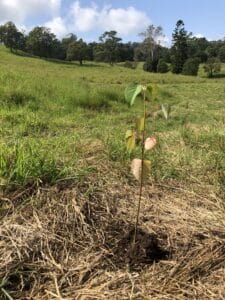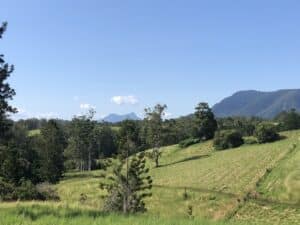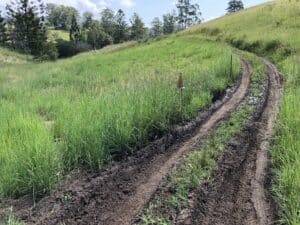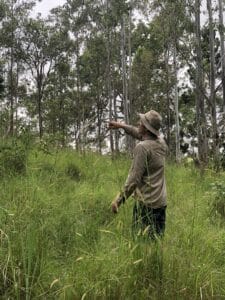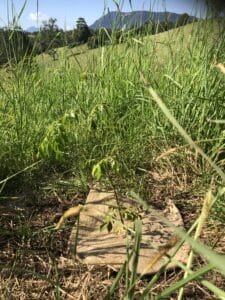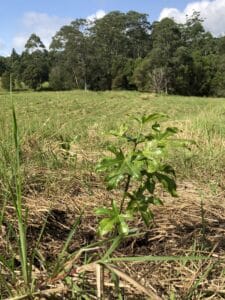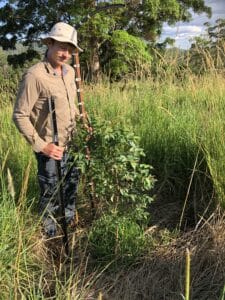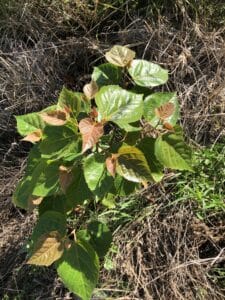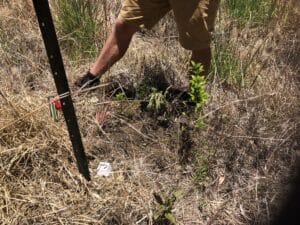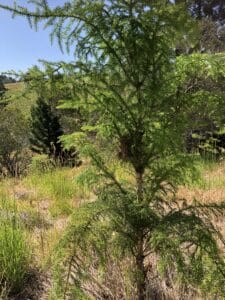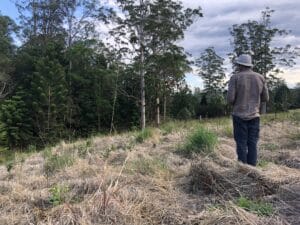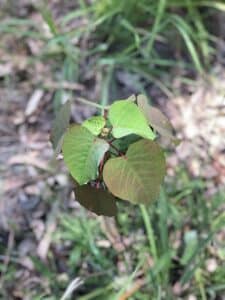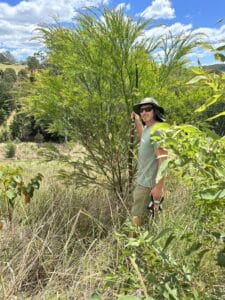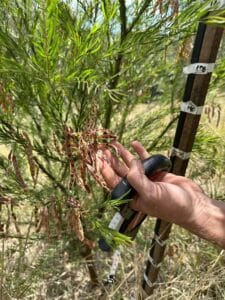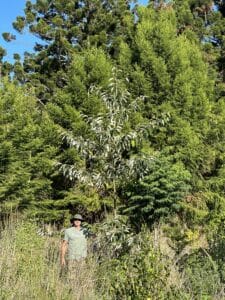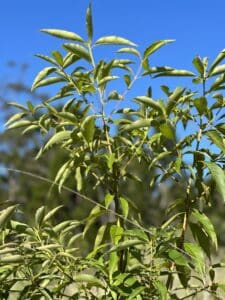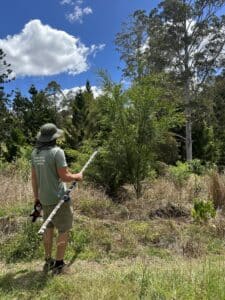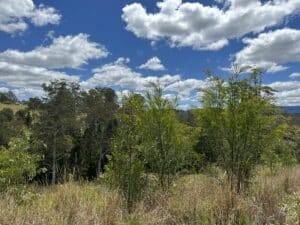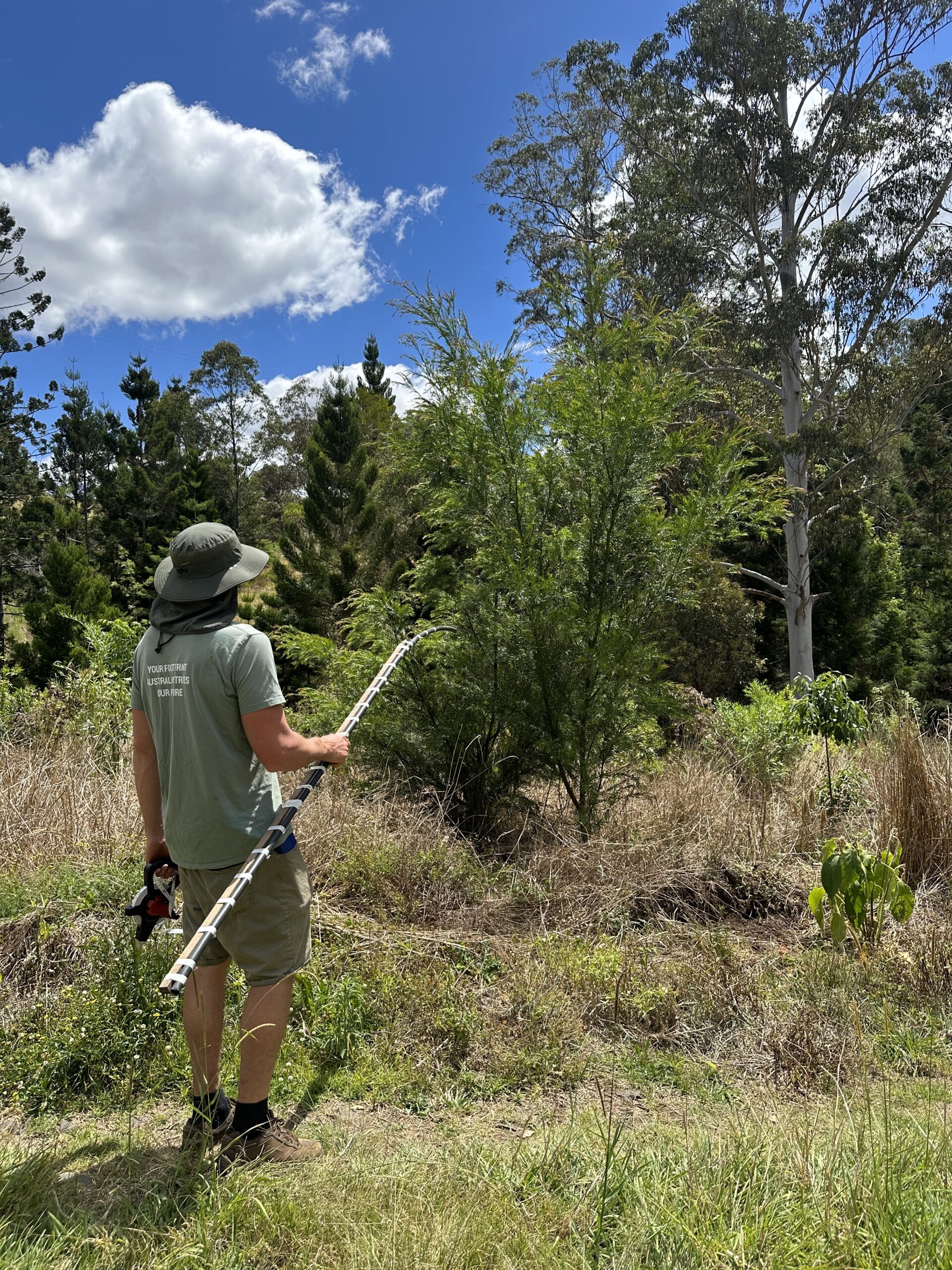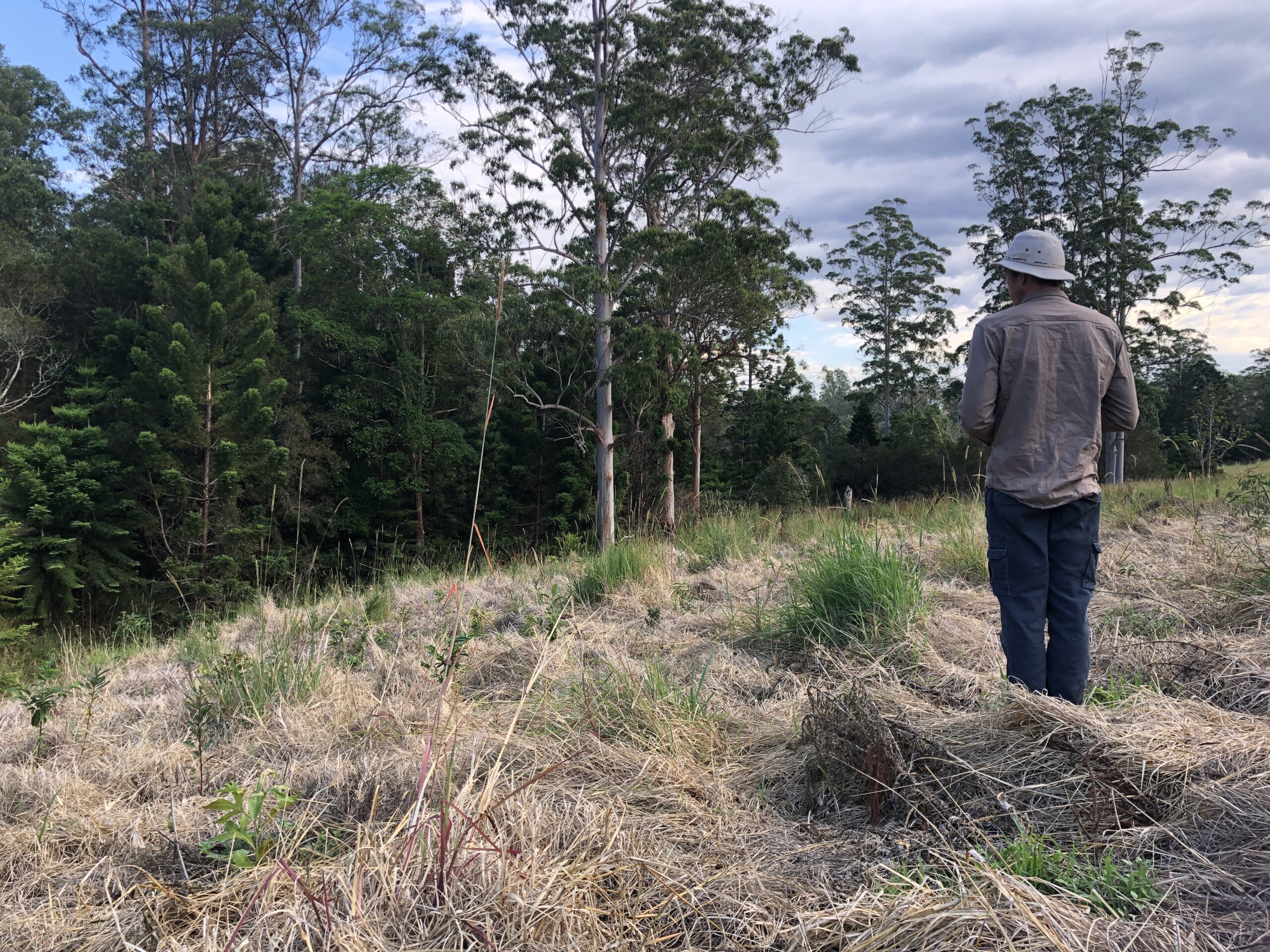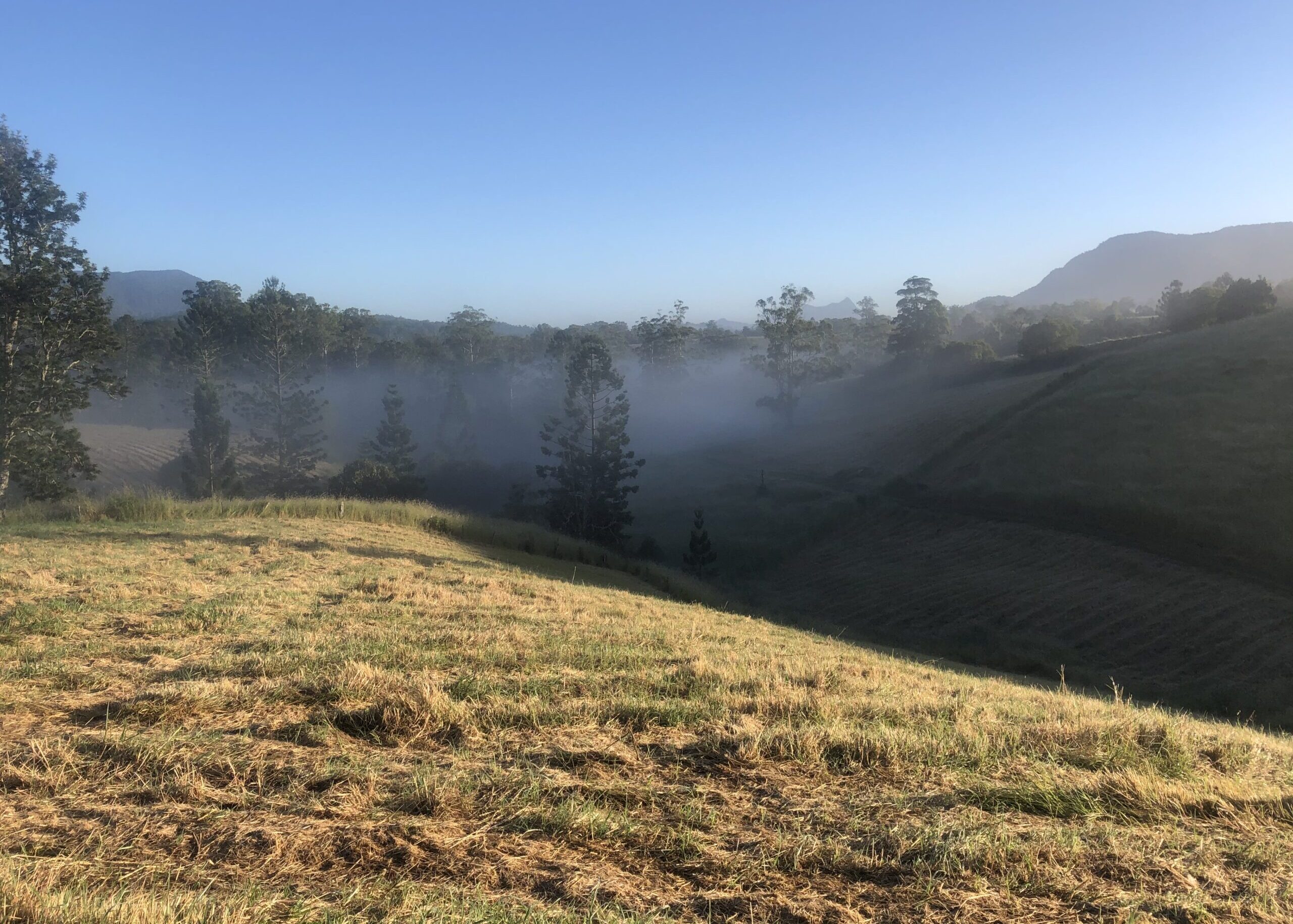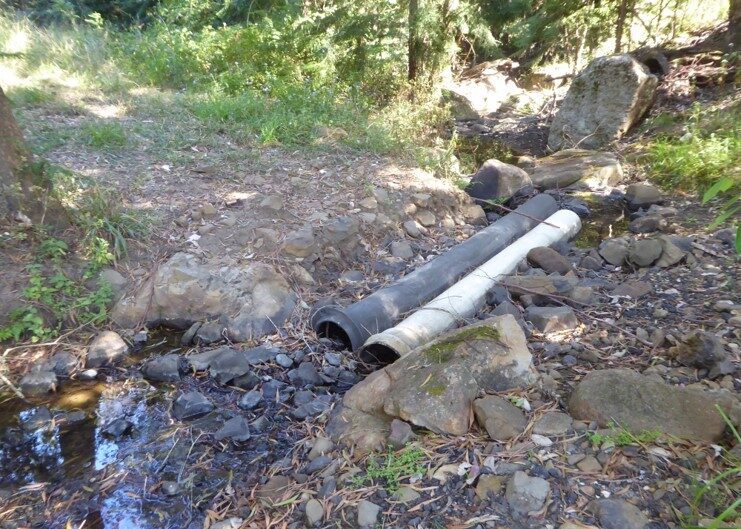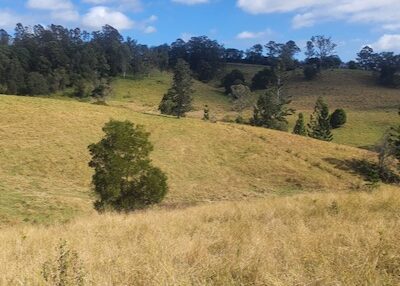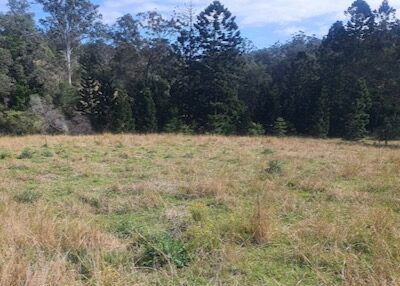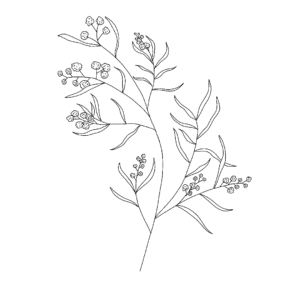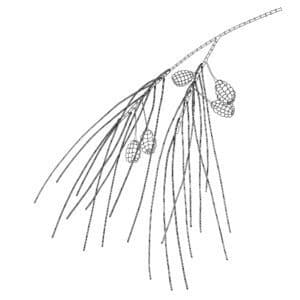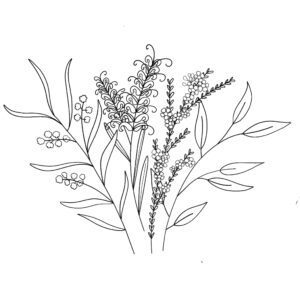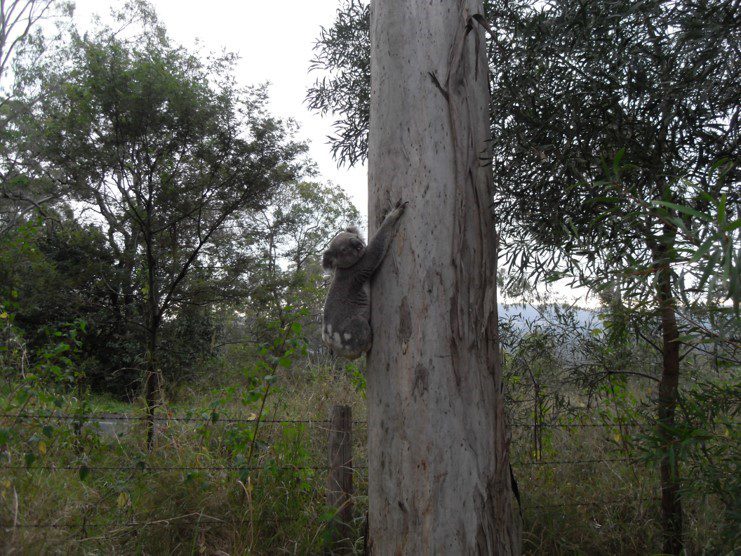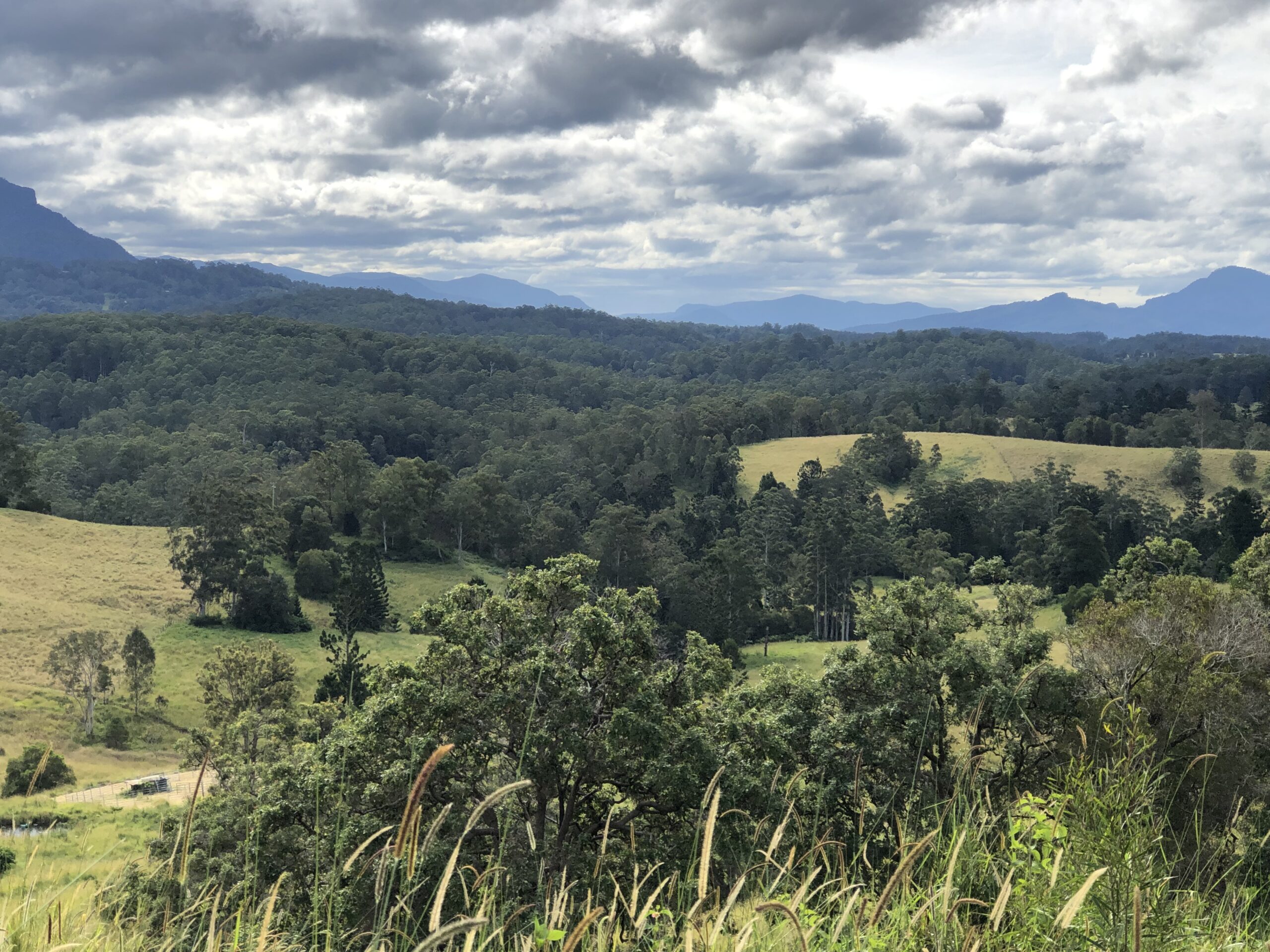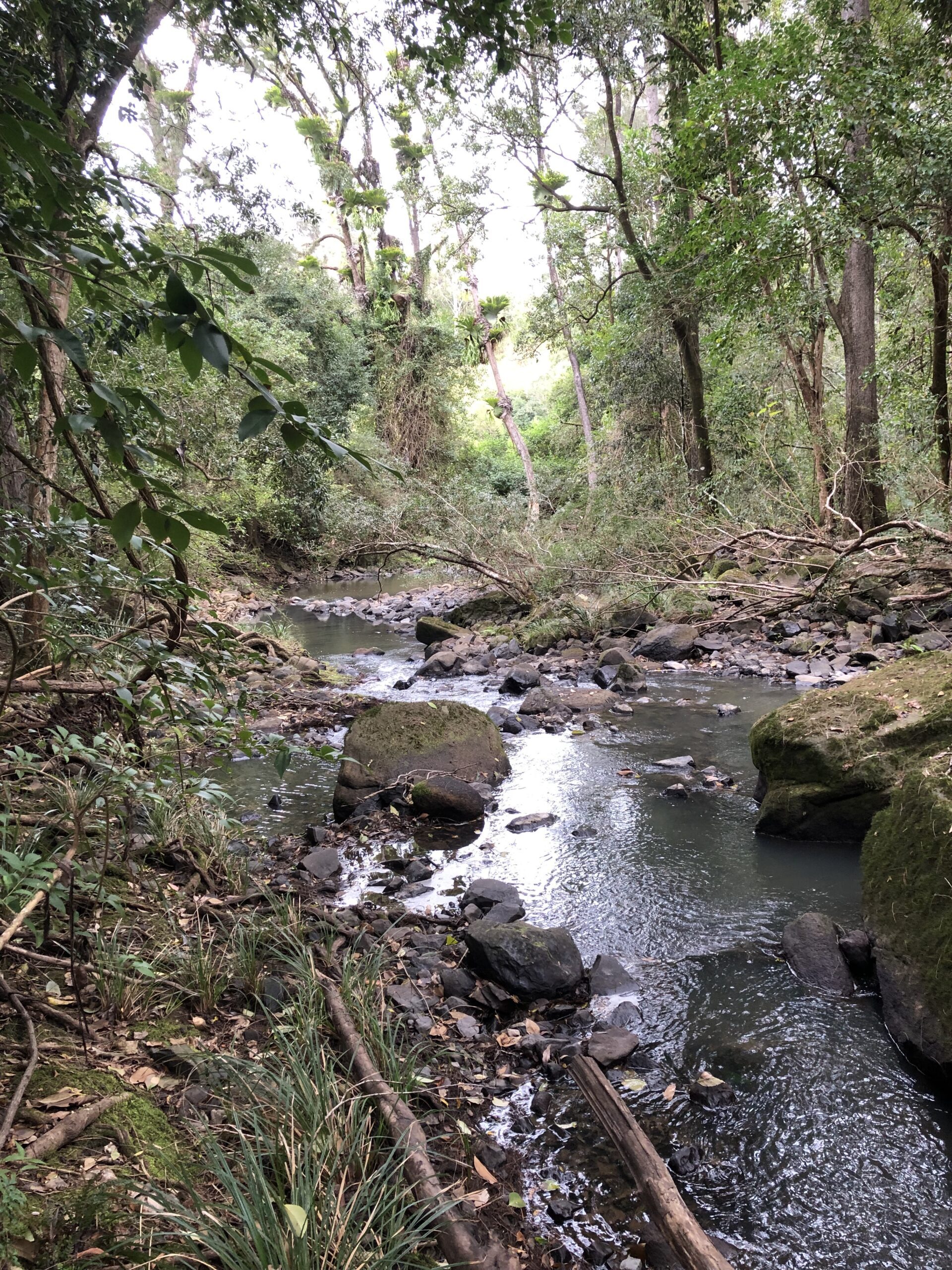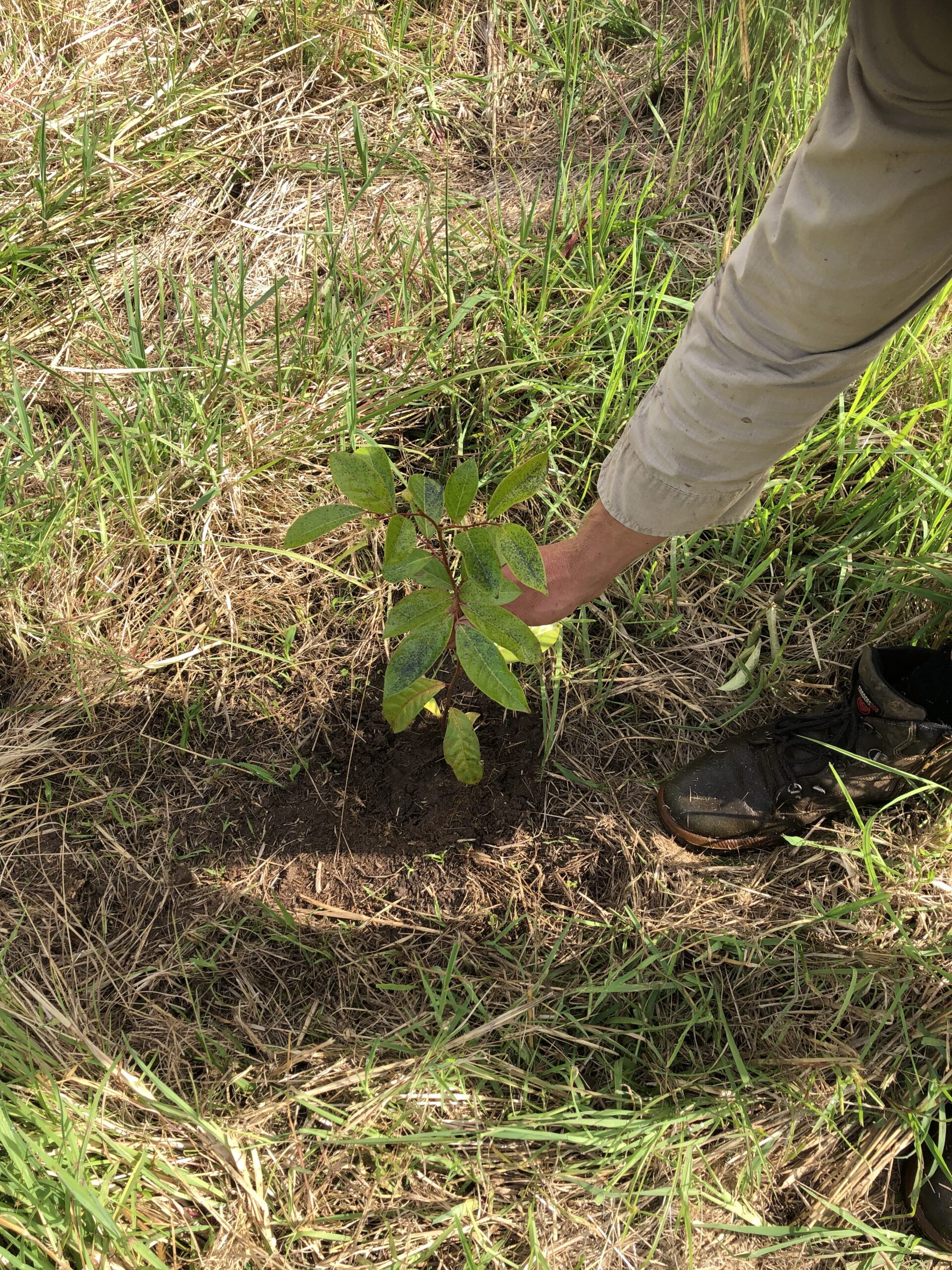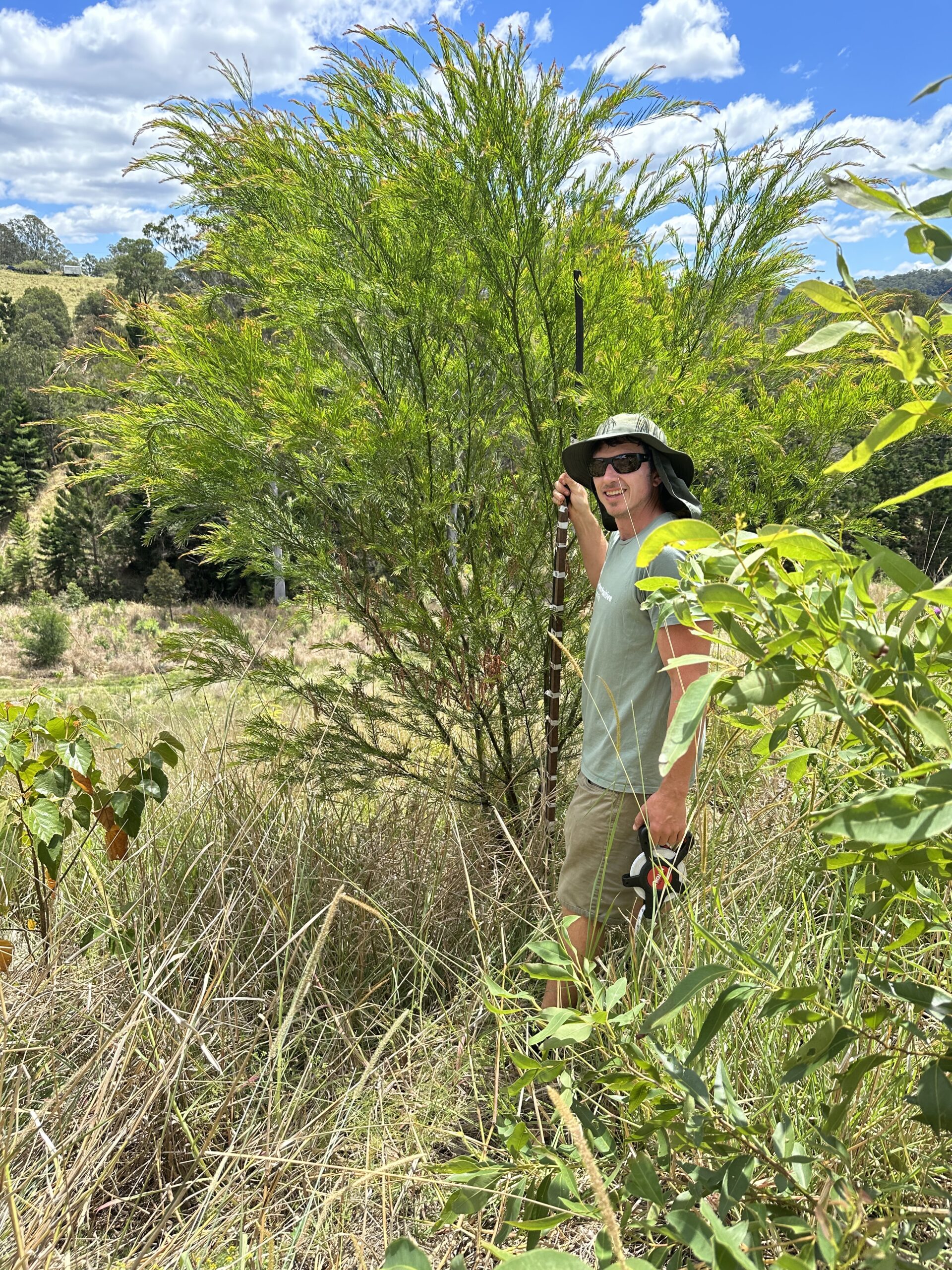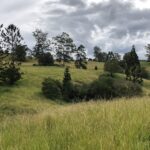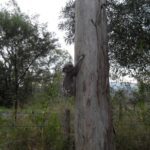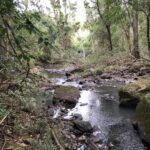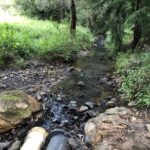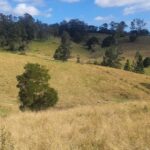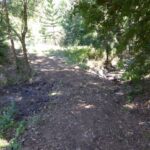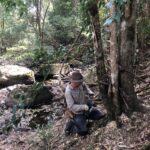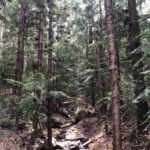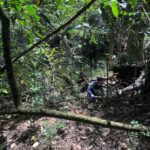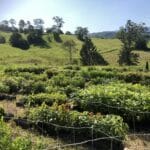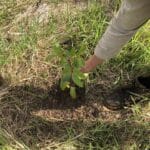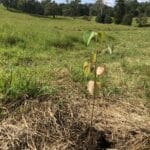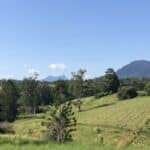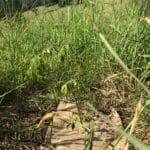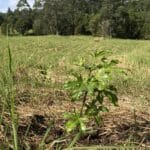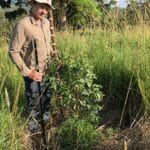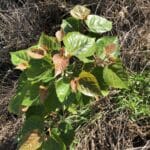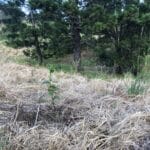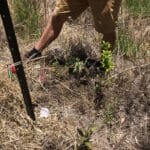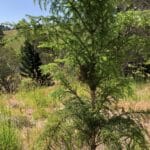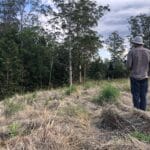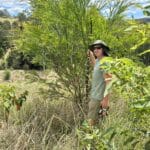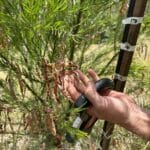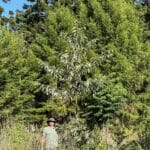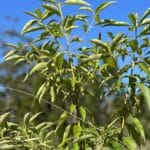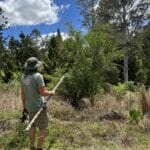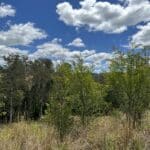![Pre-planting at Nimbin showing weeds]()
Remnant vegetation in the middle of the property which will form part of the high density planting area.
![A koala halfway up a tall Eucalyptus tree]()
A koala spotted near the front gate of the property.
![Pine forest with tree big tree trunks and green, leafy shrubs to the right]()
Existing regenerated Hoop pine forest.
![View of a large valley with dense trees]()
View from the highest point on the property.
![Creek bordered by tall trees]()
Webster’s Creek which runs along the western edge of the property.
![Nimbin landscape with trees]()
Part of the site which was previously used for grazing.
![Two exposed concrete drains across a creek with trees and rocks surrounding]()
One of the damaged creek crossings limiting access across the site.
![Nimbin landscape with trees]()
Part of the site which was previously cleared for grazing.
![Landscape with grass in foreground and trees in the background]()
Remnant bush on the property where koalas are regularly spotted.
![Exposed drains across a rocky creek]()
One of the exposed creek crossings limiting access to site.
![Blue excavator with tray raised in front of trees]()
Excavator used for creek remediation.
![Dirt track leading through trees]()
Creek crossed fixed and ready for use.
![Man in khaki shirt and hat kneeling next to a large tree removing surrounding weeds]()
Bush regeneration underway during October 2021.
![Part of the 6ha area allocated to bush regeneration.]()
Part of the 6ha area allocated to bush regeneration.
![Man in blue shirt and hat kneeling next to a large tree removing surrounding weeds]()
Future Forests team member removing invasive weeds such as camphor laurel and privet as part of bush regeneration.
![Seedlings trays organised on the ground ready for planting at the on-site nursery.]()
Seedlings ready for planting at the on-site nursery.
![Future Forests contractors work in the nursery area at Nimbin, NSW]()
Contractors from Future Forests working in the on-site nursery area.
![Man carrying seedling trays out from the back of a ute tray]()
Sam from Future Forests loading seedlings into the ATV (an all-terrain vehicle necessary to get around the wet, slippery site).
![Hand bending down to touch seedling in ground]()
Planted seedling with speckling of non-toxic Sentree wallaby deterrent.
![Planting area with remnant trees ready to be planted]()
Planters from Future Forests working in the west side planting area.
![Close up of seedling growing in planting area]()
Seedling in the rear planting area.
![Planting area showing Mt Wollumbin in the distance.]()
Planting area showing Mt Wollumbin in the distance.
![Very muddy creek crossing]()
Very muddy creek crossing due to flooding which created difficult access to planting areas across the site.
![Man standing amongst high grass pointing towards tall trees in background]()
Sam from Future Forests pointing to ironbark trees in the bush regeneration area.
![Seedling with jute matting to suppress Setaria grass.]()
Seedling with jute matting to suppress Setaria grass.
![Landslips caused by catastrophic flooding in March 2022 in Nimbin]()
Landslips caused by catastrophic flooding in March 2022.
![Close up of seedling growing in ground]()
Seedling planted in the rear site area.
![Man measuring tree with a measuring stick]()
Sam measuring a seedling with incredible growth at one of the plots.
![close up of a healthy Commersonia bartramia ('Brown kurrajong') seedling.]()
Healthy Commersonia bartramia (‘Brown kurrajong’) seedling.
![Seedling surrounded by Setaria grass.]()
Seedling surrounded by Setaria grass.
![Metal stake in the ground next to a seedling]()
Marking out plot 3.
![Red-browed finch nest visible in a naturally regenerating hoop pine tree.]()
Red-browed finch nest visible in a naturally regenerating hoop pine tree.
![Man standing in monitoring plot with excellent growth, overlooking remnant bushland.]()
Monitoring plot with excellent growth, overlooking remnant bushland.
![Man measuring seedling with a wooden measuring stick]()
Sam (Future Forests) measuring the height of a slow growing rainforest tree.
![Person bending down with the end of a measuring tape in a field]()
Marking out plot 8 amongst the high weed coverage.
![Close up of a Homanthalus species ('Bleeding heart').]()
Homanthalus species (‘Bleeding heart’).
![man smiling standing next to a tree holding a measuring stick]()
Sam (Future Forests) measuring an Acacia fimbriata.
![Hand holding seed pods on a tree branch]()
Seed pods growing on an Acacia fimbriata.
![Man standing next to a tall tree with forest in background]()
Sam (Future Forests) standing next to an impressively tall rainforest tree.
![close up shot of a plants leaves with the sky in the background]()
Close up of a healthy seedling.
![Man standing with measuring stick look at tree]()
Sam (Future Forests) seeking the next monitoring plot.
![Revegetation planting with remnant forest in background]()
Part of the site showing great establishment 18 months after planting

